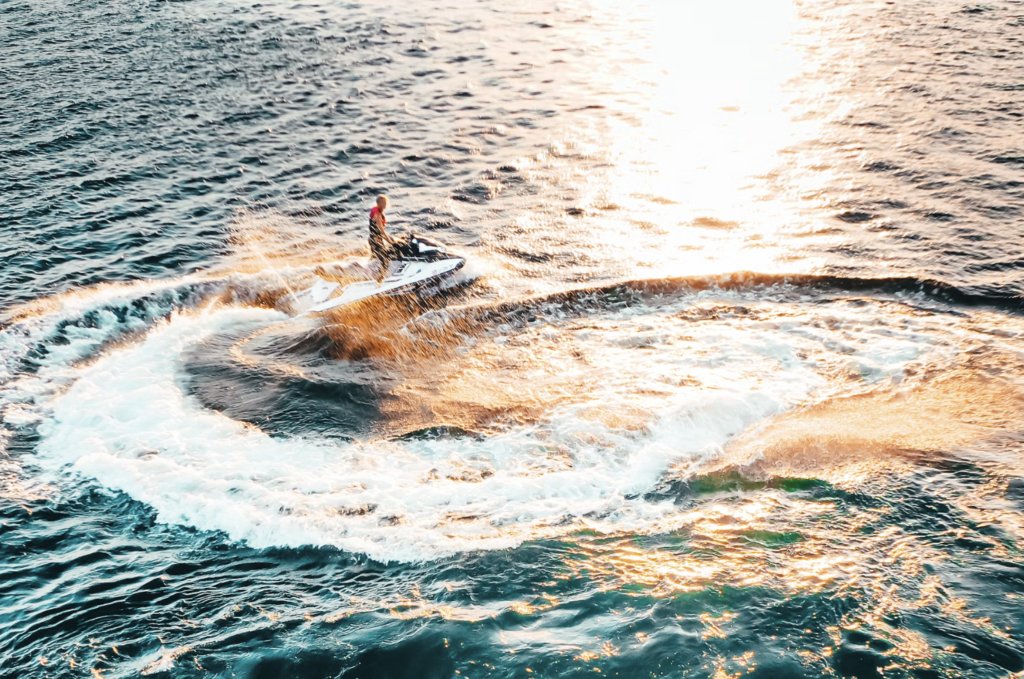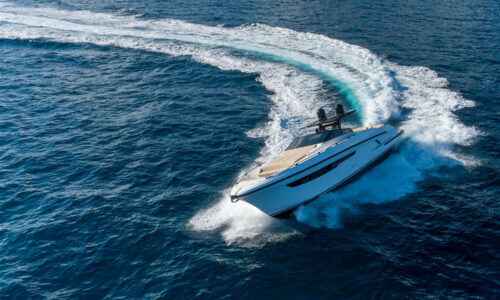Take an Official State-Approved Boater Safety Course
Kansas Jet Ski License: Do I need a license to drive a jet ski?
In short, it depends on your age. Operators between the ages of 12 and 20 must complete a state-approved boater education (safety) course and carry a Boater Education Card in order to operate a jet ski. This is sometimes referred to as a “jet ski license”.

What is the “Kansas jet ski license”?
There is no standalone “jet ski license” in Kansas. Instead, jet skis are treated as personal watercraft (PWC), which fall under Kansas’s boating laws. Operators meeting certain age criteria must comply with Kansas’s boater education requirement and carry a Boater Education Card.
Do I need a license to drive a jet ski in Kansas?
Any person between the ages of 12 and 20 who wants to operate a motorized vessel (including a jet ski) without direct supervision must complete a Kansas-approved boater education (safety) course.
The supervising adult must be at least 18 and either have completed the course or be 21 or older (thus exempt).
Persons younger than 12 may not operate a motorized vessel or jet ski unsupervised; they must have direct supervision.
Are there age minimums to take the course?
There is no strict minimum age to enroll in the boater safety course, but you cannot legally operate a jet ski unaided until age 12, per Kansas law.
How do I get my Kansas Jet Ski License (boater card)?
Step 1: Take an approved boater education course
You must complete a state-approved boater safety (education) course, often offered online by providers delegated by Kansas, like Recademics.
Step 2: Pass the final exam
After studying, you take a final exam. Passing earns you the Boater Education Card (sometimes called a certificate).
Step 3: Print or receive your card
You can print a permanent certificate right away after passing. The permanent card can also be carried digitally on your phone.
Validity
Once issued, the Boater Education Card is good for life (no renewal required).
What rules and safety requirements apply to jet ski (PWC) use in Kansas?
Life jackets and personal flotation devices (PFDs)
All operators and passengers on a PWC must wear a U.S. Coast Guard–approved PFD (Types I, II, III, or V). Inflatable PFDs are not permitted in this context. Kansas Outdoors
Engine cut-off (kill lanyard)
The lanyard (engine shut-off) device must be attached to the operator’s person or clothing (or life jacket) when available. Kansas Outdoors
Operating hours
Jet skis may not be operated between sunset and sunrise. Kansas Outdoors
Speed & wake zones
Within 200 feet of docks, ramps, swimmers, moored or anchored boats, or boat storage/launch facilities, operators must maintain no-wake speed (generally ~5 mph or less). Kansas Outdoors
Within 200 feet of certain structures and swimmers, idle (no-wake) operation is required. Kansas Outdoors
Tow sports
If the PWC is towing a skier or rider, it must either have mirrors or a spotter (over age 12). The towed person counts toward the PWC’s capacity. Kansas Outdoors
Safe operation
Wake-jumping, weaving through vessel traffic, and maneuvers that endanger others are prohibited. Kansas Outdoors
Are there penalties for not carrying or getting the Kansas jet ski license?
Yes. Operators who are required to have the Boater Education Card must carry it aboard the vessel. If asked by law enforcement and unable to produce it, you may face fines or penalties.
Does Kansas recognize boater education cards from other states?
Yes. Kansas recognizes reciprocity with boater education cards that meet the standards of the National Association of State Boating Law Administrators (NASBLA).
Summary & tips
If you’re between ages 12 and 20, you must complete a Kansas-approved boater education course and carry a Boater Education Card when operating a jet ski.
- You don’t need a separate “jet ski license” in Kansas; PWCs follow general state boating rules and need the “boater education card.”
Always wear a proper PFD, attach the kill lanyard, observe no-wake zones, and comply with speed restrictions.
Print your card after passing the exam and keep it on board.
Cards that meet NASBLA requirements are typically accepted across states.
Boating
- Alabama
- Alaska
- Arizona
- Arkansas
- California
- Colorado
- Connecticut
- Delaware
- Florida
- Georgia
- Hawaii
- Idaho
- Illinois
- Indiana
- Iowa
- Kansas
- Kentucky
- Louisiana
- Maine
- Maryland
- Massachusetts
- Michigan
- Minnesota
- Mississippi
- Missouri
- Montana
- Nebraska
- Nevada
- New Hampshire
- New Jersey
- New Mexico
- New York
- North Carolina
- North Dakota
- Ohio
- Oklahoma
- Oregon
- Pennsylvania
- Rhode Island
- South Carolina
- South Dakota
- Tennessee
- Texas
- Utah
- Vermont
- Virginia
- Washington
- West Virginia
- Wisconsin
- Wyoming
